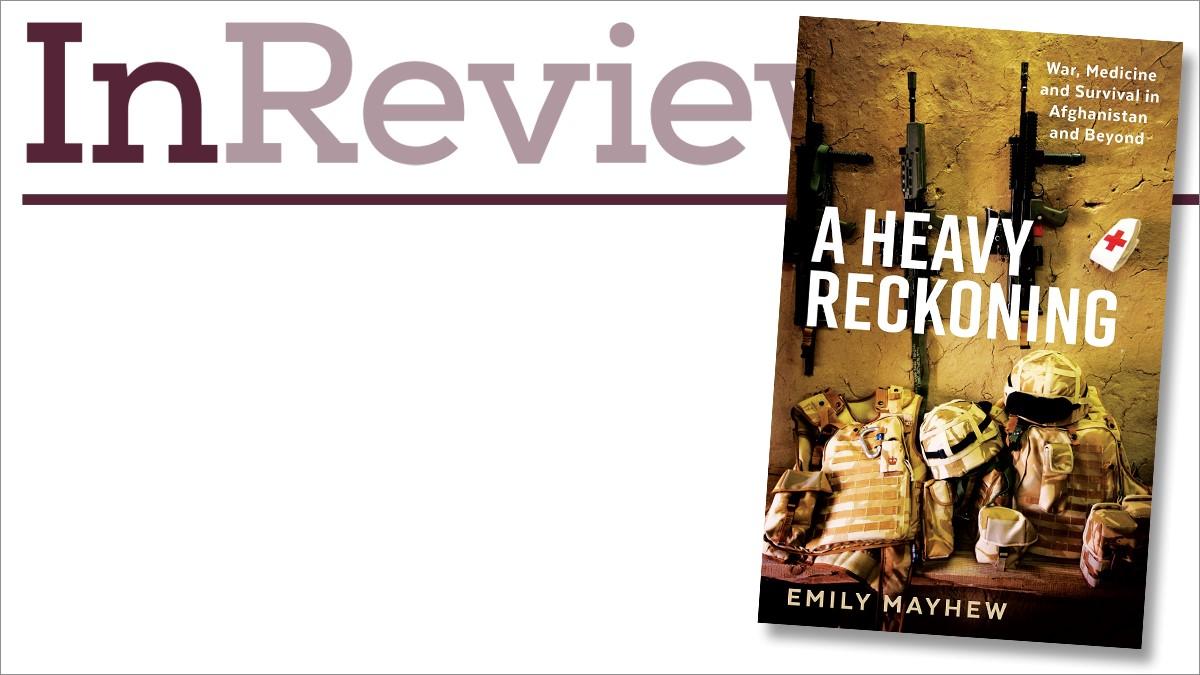Uzo Ehiogu reviews a compelling account of rehab and recovery after war

Emily Mayhew Wellcome Collection ISBN 9781781255865
As an officer and physiotherapist with the British Army during the Afghanistan conflict, I found this book fascinating.
For those interested in critical care and orthopaedic rehabilitation, it is a sobering and inspiring account of the physical, physiological, psychological and social consequences of the catastrophic trauma that befalls a casualty after blast injury.
Mayhew draws on her extensive expertise as a military medicine historian to document the journey of modern casualties. Her account also highlights the lessons from previous wars and armed conflicts.
The book is well written and researched, describing in detail the chain of evacuation that the seriously injured travelled through in Afghanistan.
And it celebrates how far military medicine, trauma care and rehabilitation have come in the past 100 years. The book uses inspiring, often sad, interviews with healthcare professionals and some of the most severely injured, who would not have survived 30 years ago.
It is also a timely analysis of advances in healthcare from the perspective of the patient, trauma consultant, critical nurse, physiotherapist, prosthetic technician and pain team.
The author does a great job of conveying the physiological consequences of blast injuries in an accessible way.
The ‘deal’ or ‘negotiation’ that the patient makes with his or her physiology and damaged body when they are saved on the battlefield thanks to modern medicine is explained by the author metaphorically.
The call back from the brink of death after extreme resuscitation has consequences, with repercussions for the casualty at a later date.
This emerges clearly as we follow patients though their care. We get updates on how their mangled bodies cope with the multiple insults on their physiology from the blast wave, blood loss, infection, repeat surgical procedures to debride dead flesh and reconstruct broken bones, as well as the burns, pain and psychological distress. A very expensive negotiation for the life of the casualty.
The middle section of the book deals with the casualty post-critical care, and their subsequent rehabilitation and return to normal life. The military reckoning, as Mayhew explains, is the beginning of physical and vocational rehabilitation.
As a former physiotherapy officer, this section of the book made me feel very proud. It is sobering and inspiring to read about the dedication of the rehabilitation teams at the Defence Medical Rehabilitation Centre Headley Court in Epsom, Surrey, and the commitment of patients and their families. This section explains very clearly the nature of military rehabilitation and the ethos of professionals and patients pushing the boundaries of science and technology. It highlights the role of reintegrating men and women back into the military system, providing them with purpose, direction and discipline – something they need in spades during the long months of rehabilitation. As a consequence of starting rehabilitation, they are no longer considered patients and are once again professional service men and women, subject to military law and duty.
The final part of the book explains the ongoing implications of a blast injury for the casualty and their future life, both inside and outside the military.
Again using the experiences of blast-injury survivors and healthcare professionals, the consequences of post-traumatic stress disorder, chronic pain and stump complications are explained. These are examined in the context of the lessons that have been learned from previous conflicts – and those which have not.
To use the author’s metaphor, ‘in the end once the dice has been rolled and the deal done’ we cannot be sure of the nature of the ‘heavy reckoning’ for those patients who sustain blast injury and are subject to extreme resuscitation.
- Uzo Ehiogu, Clinical Teaching Fellow, Royal Orthopaedic Hospital, Birmingham
Number of subscribers: 1




































